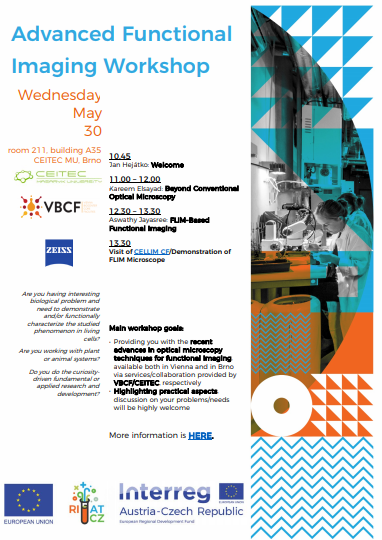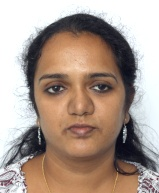About event
 Are you having an interesting biological problem and need to demonstrate and/or functionally characterize the studied phenomenon in living cells?
Are you having an interesting biological problem and need to demonstrate and/or functionally characterize the studied phenomenon in living cells?
Are you working with plant or human/animal systems?
Do you do the curiosity-driven fundamental or applied research and development?
If you have answered at least one of the aforementioned questions YES, then you are a good candidate for the participation of our brief (3 hours) workshop.
The main workshop goals are:
- Providing you with the recent advances in optical microscopy techniques for functional imaging, available both in Vienna and in Brno via services/collaboration provided by VBCF/CEITEC, respectively
- Highlighting practical aspects, discussion of your problems/needs will be highly welcome
REGISTER BELOW.
Program
| 10:45 | Jan Hejátko: Welcome |
|---|---|
| 11:00 – 12:00 | Kareem Elsayad: Beyond Conventional Optical Microscopy |
| 12:00 – 12:30 | Lunch/Refreshments |
| 12:30 – 13:30 | Aswathy Jayasree: FLIM-Based Functional Imaging |
| 13:30 | Visit of CELLIM CF/Demonstration of FLIM Microscope (Zeiss LSM 780 with Becker&Hickl FLIM/FCS and “white” In Tune pulse laser) |
 |
Kareem Elsayad, head of the Advanced Microscopy CF at VBCF, Vienna, Austria |
Beyond Conventional Optical MicroscopyHere I will give an overview of some cutting edge and novel optical microscopy techniques beyond those that can be found in a microscopy core facility and which are available at The VBCF Advanced Microscopy Facility. In particular, I will focus on the use of time- and wavelength- resolved methods to extract information on the dynamics, structure and mechanical properties of biological samples (1), as well as some novel illumination and detection schemes that can be used for higher resolution/contrast time-lapse imaging.
|
|
 |
Aswathy Jayasree, post-doc and advanced imaging specialist in the Functional Genomics and Proteomics of Plants group, CEITEC MU, Brno, Czech Republic |
FLIM-Based Functional ImagingFluorescence Lifetime Imaging (FLIM) is recording the fluorescence lifetime of a molecule as an image instead of photon intensity. Since fluorescence lifetime is characteristic of a particular fluorophore, this information can be used to distinguish between two molecules that emit the fluorescence of the same wavelength and their immediate (functional) status.
|
|
|
References
|
|


